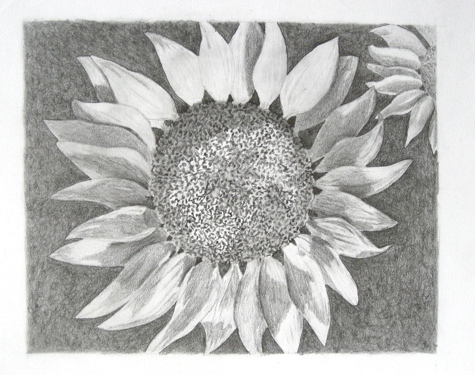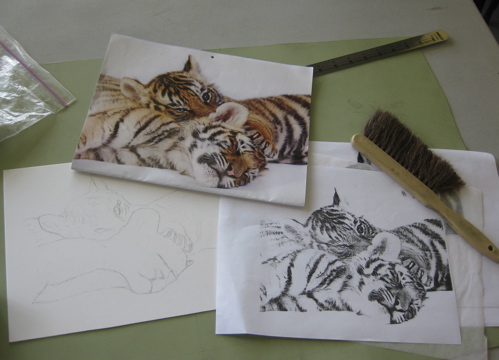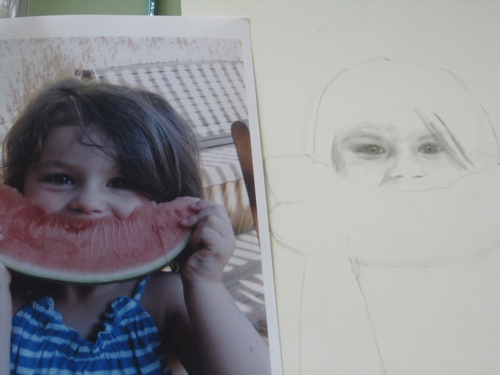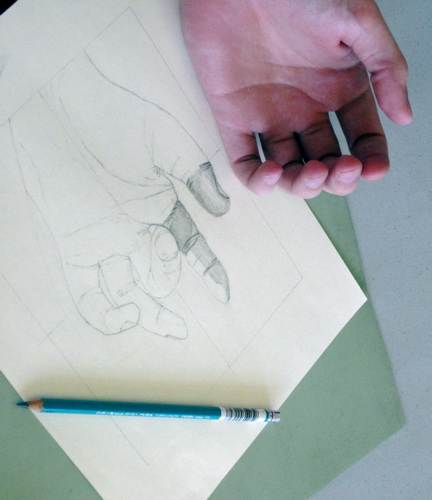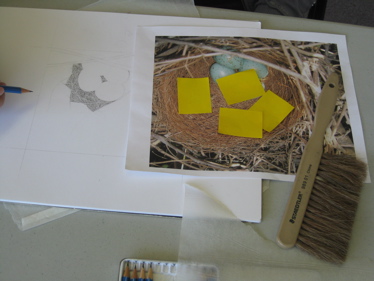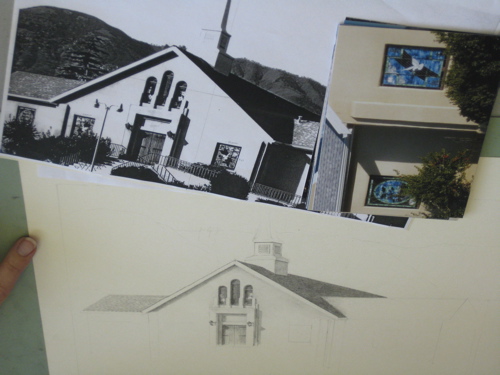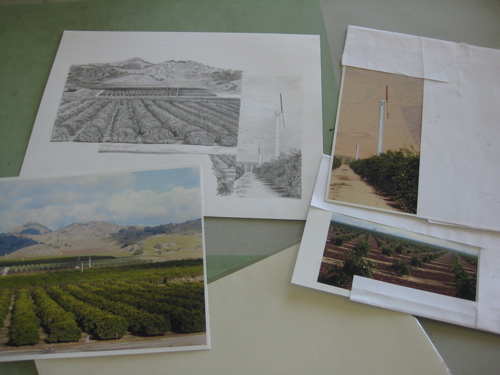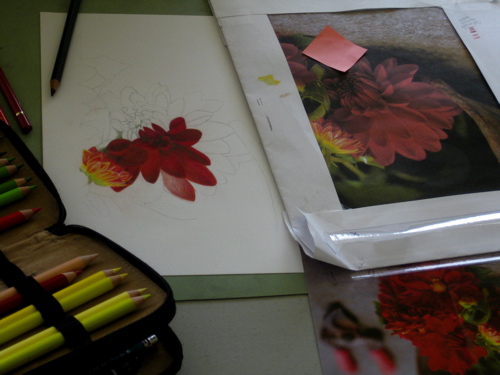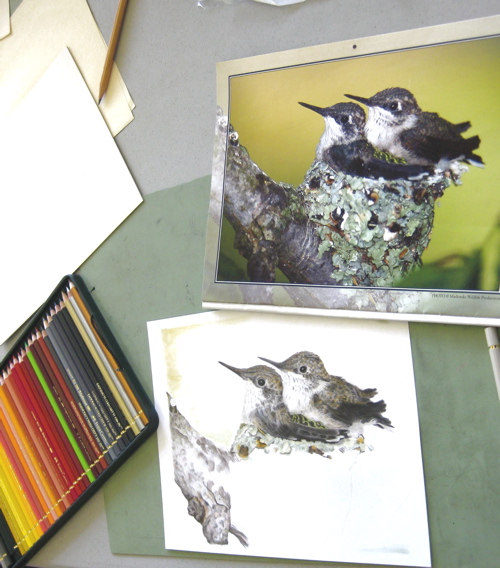
If you have been following my blog entries on Learning to Draw, you may have noticed a few tools in the photos. When I was a student of architectural drafting, I discovered 2 indispensable tools – a drafting brush and an erasing shield. When you erase, crumbs are created. (duh!) If you brush them away with your hand, you WILL smear the drawing. If you blow, you might spit. (As we say in Drawing Lessons, “Spit happens!”) Only has to happen once to your drawing to teach you an unforgettable lesson about using the drafting brush. The erasing shield looks like a tiny thin metal template. It is, sort of, but instead of tracing the shapes, it allows you to isolate the parts that you don’t want and erase them. When the corners are worn off of your eraser, the erasing shield prevents wiping out large areas by accident. Tools – we all need them! p.s. See a corner of the triangle? OF COURSE I use a straight edge! How else can I draw perfectly straight lines?? Cheating? Not!
